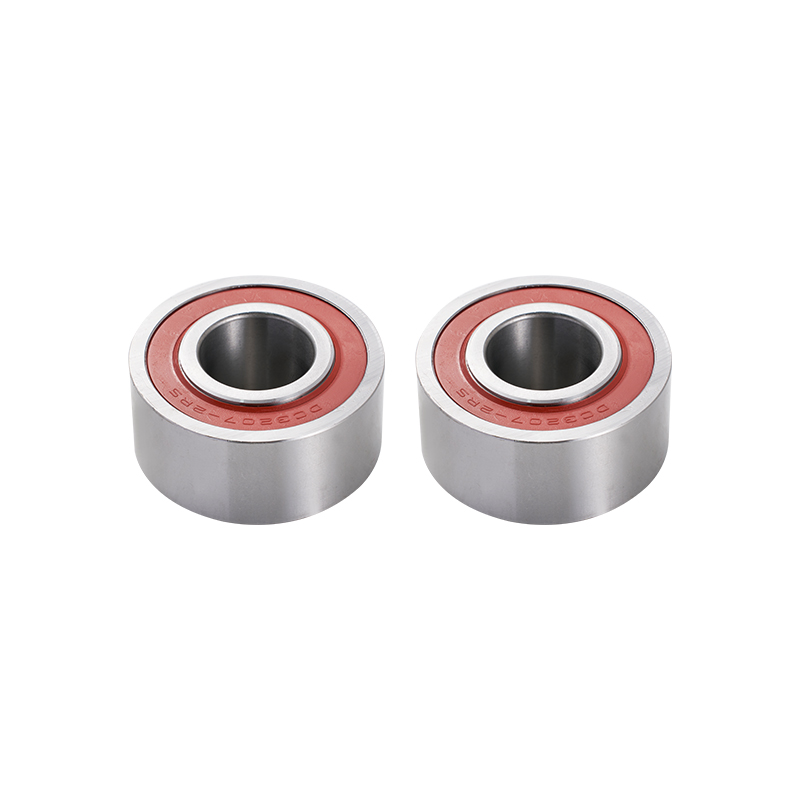As manufacturing processes evolve, engineers are looking for ways to improve stiffness, reduce heat generation, and support higher loads—all while maintaining compact and reliable spindle assemblies. One of the key innovations contributing to this evolution is the increasing adoption of the double row angular bearing.
Traditionally, spindle assemblies relied on single row angular contact bearings arranged in pairs to support both radial and axial loads. While effective, this setup often required precise alignment and more space, increasing assembly complexity. The angular contact double row ball bearing offers a smarter alternative. By incorporating two contact angles within a single bearing unit, it significantly simplifies spindle construction while delivering outstanding performance under combined loads.

What makes the angular contact double row ball bearing particularly attractive to designers is its ability to carry axial loads in both directions while also handling radial loads with ease. This dual-load capability is crucial in spindles, where rapid changes in tool movement and cutting direction generate complex force profiles. The two rows of balls are positioned at specific contact angles, which increases rigidity and stability, improving overall machining accuracy.
The double row angular bearing also provides outstanding resistance to misalignment, which can be a major concern in high-speed spindle applications. Misalignment causes premature bearing wear and compromises precision. Thanks to its self-aligning characteristics, the double row angular bearing ensures the spindle shaft remains stable, even under heavy loads or slight shaft deflections.
Another critical advantage of the double angular contact ball bearing is its compactness. By combining two bearing rows into a single housing, engineers can reduce the spindle's axial length, making room for other critical components or enabling more compact machine designs. In space-constrained applications like dental drills, CNC engraving machines, or micro-spindles, this compact form factor is a major benefit.
Thermal stability is another area where these bearings shine. In high-speed spindles, heat buildup can cause thermal expansion, affecting bearing preload and ultimately reducing machining accuracy. The double angular contact ball bearing is designed to manage internal clearance effectively, keeping preload consistent and minimizing the risk of thermal distortion. This makes it particularly suited for precision grinding and high-speed milling.
The role of the angular contact double row ball bearing in modern spindle systems extends beyond performance—it also helps reduce manufacturing and maintenance costs. By using a single integrated unit instead of two separate bearings, manufacturers simplify assembly processes and reduce the chance of installation errors. Additionally, the extended service life of the angular contact double row ball bearing means less frequent maintenance and fewer machine downtimes, which is a key priority in lean manufacturing environments.
In terms of material technology, many double row angular bearing options are now available with ceramic balls or hybrid steel-ceramic combinations. These offer lower weight, reduced friction, and better wear resistance, further enhancing the bearing's performance in demanding environments. Combined with modern lubrication and sealing systems, today's double row angular bearing units are more robust and efficient than ever before.
As industries continue to push the boundaries of speed and precision, spindle design must evolve in tandem. The double angular contact ball bearing is no longer just a niche solution—it's becoming a standard choice for high-performance machines in aerospace, automotive, mold making, and medical device manufacturing.
The double row angular bearing is revolutionizing spindle architecture by offering high rigidity, bi-directional load support, compact design, and better thermal performance. For engineers and designers looking to optimize spindle systems for modern manufacturing challenges, incorporating an angular contact double row ball bearing is not just an option—it's a competitive advantage.



 English
English русский
русский
